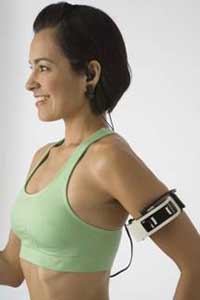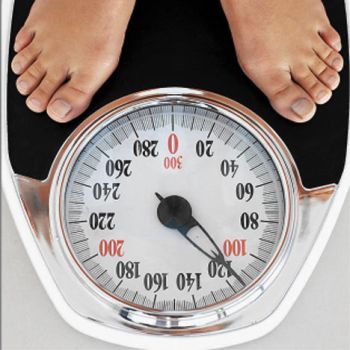
Jogging/Running
Jogging is an excellent exercise for losing weight, because it consumes calories at a rapid rate. Combined with eating less, this guarantees an efficient weight loss. Plus, there's no special skill required; just get into your running shoes and choose a nice jogging-path along a trail or in a park and you won't even fell like you are exercising! Listening to an iPod would work too, but I find it better to observe birds and trees as I run, especially during my lapse around the lake. Running improves co-ordination between your muscles, and makes your leg-muscles wotk well. It also helps increase hear-rate, exercising the heart and the lungs at the same time. Those who run regularly are less likely to experience bone and muscle loss as they age, and it also helps lower your blood-pressure, as well as maintain elasticity of your arteries. But if you have aches and joint-pains, like knee-problems or weak ankles, make sure to consult a doctor before you start running, so as to prevent injuries. Also, invest in comfortable running shoes, and make sure to choose a proper running track and avoid bumpy, un-even ground to prevent physical damage.
Biking/Cycling
Cycling (img credit) is a great fun summer activity that is especially enjoyable when done with kids. Biking is one of the most effective exercises to shed off those extra calories and exercise your legs, abs, thighs and butt. Even a small amount of cycling would be good enough to boost your metabolism level, thereby helping your weight loss program. It helps to improve the overall balance and coordination, minimizes the risk of coronary heart disease and helps in preventing health problems like strokes, diabetes and cancer. It also keeps your blood pressure under control, as well as build stamina and endurance. If you choose a bike path with elevation, you can be sure to burn some serious calories, and have muscular, well-toned legs! but in the least, its a great way to exercise without a lot of stress, especially if you choose to keep it light.
Rowing/Kayaking
Rowing is a great aerobic exercise for total body workout, as it involves use of many muscles of the arms, legs, abdomen, and torso. Also, it has minimal stress effects on back and body, as opposed to running or cycling. Those who love water sports should definitely try to go rowing or kayaking in a nice lake or a bay. Of course, the more adventurous people seeking a real workout can go into the sea and try rowing against the waves, which will burn a large number of calories in a short amount of time. While Rowing, lean back from your hips while pushing back with your legs and torso. Bend your arms as you pull on the oars until your elbows pass behind your chest and the handles are an inch from your stomach, keeping your back straight the entire time. Kayaking is one of my favorite activities, especially during summer, as most of the camp-sites have lakes or inland bays that offer a great view and a great workout!
Hiking/Trekking
Taking short and scenic hikes in summer may be the best way to enjoy nature and increase fitness at the same time. Research has shown that Hiking or Trekking can stem heart disease, decrease hypertension by dilating blood vessels, decrease cholesterol levels while increasing HDL (the good cholesterol), decrease weight by burning calories, and prevent ageing of the immune system. Hiking also alleviates osteoporosis by improving bone density; If that's not enough reasons to hike, walking at a comfortable pace while taking in fresh air improves and maintains mental health by producing calming brain chemicals called endorphins, which basically act as mild tranquilizers. but more than that, you'll achieve a sense of satisfaction when you hike up to a mountain peak and look down below to see how much you came up, that is, after you've explored the breath-taking views from a mountain-top!
Outdoor Sports
Tennis and Volleyball are the two perfect outdoor sports for summer. Playing Tennis for an hour thrice a week can do wonders to your body, both physically and mentally. It builds flexibility, muscle co-ordination, agility, stamina and acts as a great aerobic and anaerobic activity. Studies have shown that competitive tennis burns more calories than aerobics, inline skating, jogging or cycling. Volleyball works great too, and is definitely more fun; even if you may not burn as many calories as with Tennis, its easier to hook up a net on the beach of in a shaded park and get some physical exercise alongwith loads of fun. Golf is another sports which can act as a nice workout, provided you don't use a golf cart throughout your 18 holes! It also makes the mind more alert and improves eye-sight and judgement.
Swimming/Water Aerobics
Swimming uses almost all of your major muscle groups, and it places a vigorous demand on your heart and lungs. The major advantage of swimming is that its an overall body exercise, and it boosts your metabolism. When your metabolic rate goes up, you burn more calories. And more calories burned means faster weight loss. Swimming is not as effective for weight-loss as running or cycling, because when you are in the pool you don't heat up and sweat as much as you do on land, and your body does not have to work hard to cool you down as much once the exercise session concludes. Also, you feel more hungry after a swim-session than after a gym-session, so you might tend to eat more. So the post-workout effect of swimming is lesser than that of other activities. neverthless, Swimming helps builds endurance, muscle strength and cardio-vascular fitness, without being harsh on your joints; lots of people have found swimming to be a form of meditation too when you just let your body relax and swim with a very low effort.
Its imperative to be conscious about keeping yourself fit, and though nothing can replace a complete workout at the gym, summer is a time when you can choose certain activities that other seasons do not offer, so make the best use of it! Choose physical activities that you enjoy and that are readily accessible. Remember, any kind of exercise gives maximum results when you enjoy doing it. Choosing to spend a few days outside rather than in your gym can be good for your mind, body and spirit, and you'll feel more refreshed and energised. I've done this myself, so I can vouch for it; now its your turn to try and see for yourself!
So whether you yearn to lose weight or just be fit, try the above summer workouts to augment your fitness routine at the gym, and experience the difference!
Related Articles:
What to Eat Before & After a Workout
How to Count Calories for Healthy Weight-Loss
10 Tips to Eat Right & Stay Fit


 As the awareness for staying healthy and fit increases day by day, more and more people are looking towards ways to achieve healthy weight loss, and the most important step in doing so is to count your calories and create a deficit or increase to achieve your target healthy weight. No matter how much time you spend at the gym, if you consume more calories than you burn, you'll never lose weight. But as daunting as it may sound, there's a formula to measure how many calories you should eat based on your BMR(Basic Metabolic Rate), and its advisable to choose a good diet and fitness plan based on this figure so that your weight-loss plan is more meaningful and successful.
As the awareness for staying healthy and fit increases day by day, more and more people are looking towards ways to achieve healthy weight loss, and the most important step in doing so is to count your calories and create a deficit or increase to achieve your target healthy weight. No matter how much time you spend at the gym, if you consume more calories than you burn, you'll never lose weight. But as daunting as it may sound, there's a formula to measure how many calories you should eat based on your BMR(Basic Metabolic Rate), and its advisable to choose a good diet and fitness plan based on this figure so that your weight-loss plan is more meaningful and successful. Maybe a few of us dream to look like a supermodels, but absolutely everyone aspires to be fit and look good! It's really interesting how a little change in your fitness routine can accelerate your chances of achieving your goals. Exercise and a balanced diet plan will not only get you a fit body, but even a sharp mind! Contrary to what many people think, strength training is as important, maybe more important to successful fat loss than aerobic exercise. Spending hours a day doing cardio workouts may not be the best solution to tone and trim your body; you burn calories, yes, but you are mostly burning your muscle instead of fat, which would make you look flabby and leave you tired. This is where adopting a serious weight lifting routine comes to your rescue, especially for women, who find it harder to build muscle. So read on to find out why is weight-training important, and how should you go about it.
Maybe a few of us dream to look like a supermodels, but absolutely everyone aspires to be fit and look good! It's really interesting how a little change in your fitness routine can accelerate your chances of achieving your goals. Exercise and a balanced diet plan will not only get you a fit body, but even a sharp mind! Contrary to what many people think, strength training is as important, maybe more important to successful fat loss than aerobic exercise. Spending hours a day doing cardio workouts may not be the best solution to tone and trim your body; you burn calories, yes, but you are mostly burning your muscle instead of fat, which would make you look flabby and leave you tired. This is where adopting a serious weight lifting routine comes to your rescue, especially for women, who find it harder to build muscle. So read on to find out why is weight-training important, and how should you go about it.